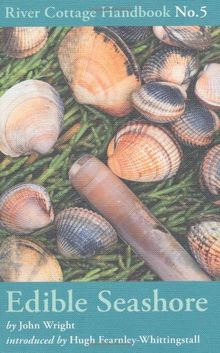
For the forager, the seashore holds surprising culinary potential. In this authoritative, witty book John Wright takes us on a trip to the seaside. But before introducing us to the various species to be harvested, he touches on such practicalities as conservation and the ethics of foraging; safety from tides, rocks and food poisoning; the law and access to the shore, our right to fish, landing sizes and seasons; and equipment such as nets, pots and hooks.
Next comes the nitty-gritty: all the British seashore species that one might be tempted to eat. The conservation status, taste and texture, availability, seasonality, habitat, collecting technique and biology of each species is covered; there are also quite a few gratuitous but fascinating diversions. The species covered include crustacea (brown shrimp, common crab, hermit crab, lobster, prawn, shore crab, spider crab, squat lobster, velvet swimming crab);molluscs (clams, cockle, dog whelk, limpet, mussel, oyster, razor clam, winkle); mushrooms; sea urchin; plants (alexanders, common mallow, common orache, frosted orache, marsh samphire, perennial wall rocket, rock samphire, sea beet, sea buckthorn, sea campion, sea holly, sea kale, sea pea, sea purslane, sea rocket, spear-leaved orache, wild cabbage); and seaweed(carragheen, dabberlocks, dulse, gut weed, laver, pepper dulse, sea lettuce, sugar kelp, throngweed, wakame).
Finally, there are thirty brilliant recipes. Introduced by Hugh Fearnley-Whittingstall, Edible Seashore is destined to join the other handbooks in the series as an indispensible household reference.